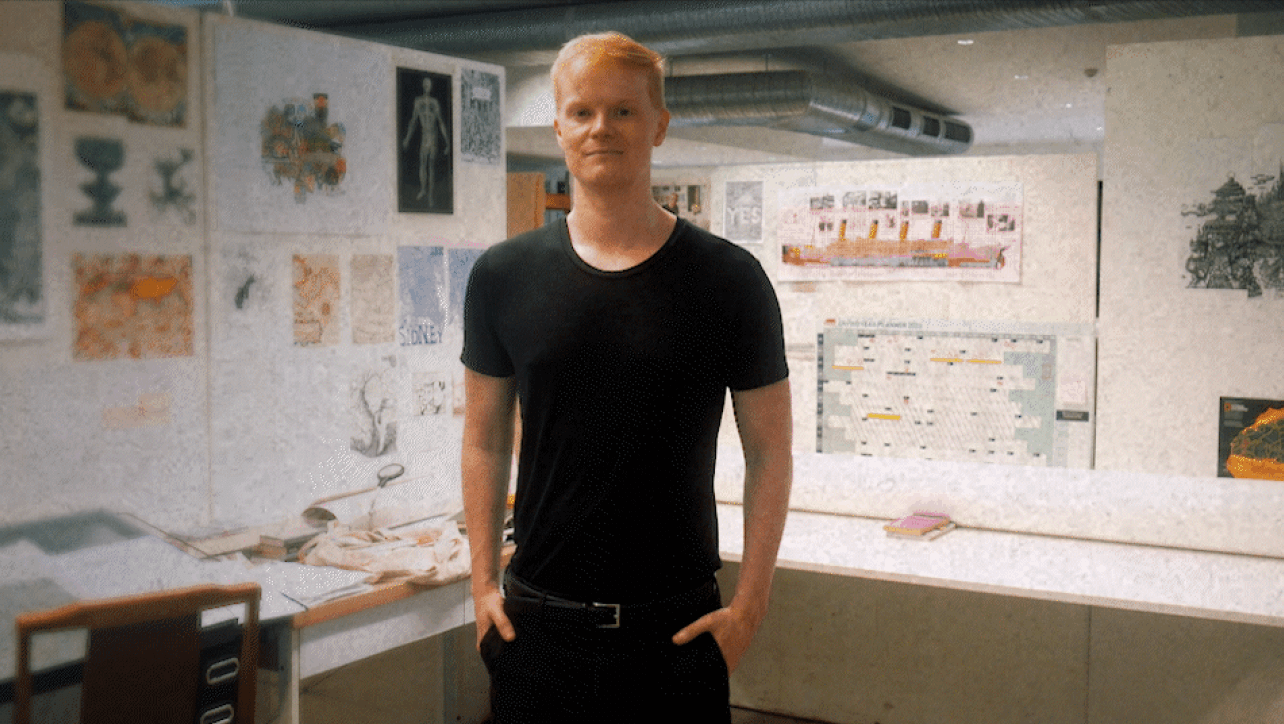Interviews
Interviewing Vexta: Psychedelics, Activism, and Illegal Art Shows
March 9, 2024

Psychedelics. Activism. Illegal Art Shows.
We caught up with Australian artist Vexta recently to find out more about her incredible origins as an artist, as well as the psychedelic influences to her creative process
In a world where urban cities are canvases for rebellion and creativity, Vexta, a visionary artist stands as proof to the power of determination and the pursuit of artistic calling.
Vexta’s story is one of artistic rebellion, it mixes activism, a passionate commitment to environmental causes, and an exploration of psychedelics. Vexta turned urban spaces into canvases for social activism and by breaking into abandoned buildings, she held illegal art openings to access the art industry, completely skipping the traditional gatekeepers.
From the early days of illegal graffiti all the way to the walls of international art shows, her art has a narrative deeply rooted in personal experiences and a profound connection to the world around her. Vexta’s art is more than visual expression; it’s a medium for conversations about the environment, consciousness, mythology, and the infinite possibilities of the human spirit.

What was the first art you started making?
I was always making art. I was making art my entire life. Literally since I could hold a pencil, I was two years old and drawing stuff. I loved art in high school. I took art after school. My dad would buy me cameras every time he went traveling, so I was photographing from when I was like 10 to when I was 18 years old, really regularly. I also loved printmaking.
After I finished university, I started traveling, doing some backpacking in Southeast Asia and stuff like that. I came back to Melbourne and that was when stencil art and graffiti was really starting to take off. In Melbourne I started doing some social activism graffiti and saw what was happening on the streets as a way to talk about things that I thought were important or that I wanted to discuss.
I thought it was super exciting and cool because it was taking art out of the gallery and putting it in the streets for people. It was bypassing the system that had been in place, bypassing the gatekeepers, running around at night.

So at this point you’re not making money from your art? Just having fun?
I wasn’t doing it for the money, but I think at my first show everything was like $45 up to, maybe $60.
So how did you survive?
When I came back from traveling I worked in hospitality a little bit and I would be making art on the side. That’s when I decided to get serious about it. I was like, should I go back to school and actually do an art degree? Or what are my options? I decided to take a job in a friend’s parents’ art store. They sold a ton of graffiti supplies as well, it was where everybody would go to shop. So I took the job at the shop so that I could learn about the art supplies, get things at a discount, and be in a space where it wasn’t going to be frowned upon if I’m drawing, you know? I really wasn’t planning on necessarily having an art career. I knew I wanted to do it, but I didn’t know how to get from A to B by doing stuff on the streets.
When Banksy did ‘Exit Through The Gift Shop’, he reached out and asked me for footage of me doing stuff on the street and I didn’t have anything! I hadn’t documented stuff because it wasn’t about that you know? So in the beginning of that film, there’s a whole montage of people spray painting and doing illegal graffiti. I’m in it, but it’s just my hands because I had nothing to give him, but he wanted to put me in the film. And, you know, I was like, that was a big moment where I thought… I need to take this a bit more seriously.
Tell me about your activism?
My early work was really political. I did one piece that was bought by the National Gallery of Australia, it was a row of riot cops with Welcome to Australia painted above it. This was true for immigration and I painted it on these big doors. It was part of an exhibition and I abseiled down the doors and painted as I went, it was part performance art.
I was also scaling trees at the time so they wouldn’t get logged so I had these climbing skills that I started to bring to my art. But I didn’t want to be reacting against something that was always happening, it felt like I was getting boxed in and it felt disempowering. I think it’s really important for artists to create the world that we want to be in, you know? Rather than just react against the thing that’s making us frustrated or angry, I want to create the other world.
I’ve always seen myself as a site specific artist, that’s one of my skills in what I do. After I started traveling I got into Comparative Mythology and peeling back the layers of – Why do we tell the stories that we tell? What narratives are serving us? What are the threads that have been going for thousands of years across cultures? How can I make work that speaks to a broad range of people that taps into these deep archetypes? What stories are the ones that for some reason resonate with us as humans and give us certain feelings? So as I would travel I would look into myths and stories of wherever I was.
And so, I just keep coming back to a lot of the same ideas in my work constantly. Mostly it’s to do with freedom, and the way everything is interconnected across the world. As well as speaking from my own feminine perspective, that became quite important to me, especially starting out in graffiti, which was super male dominated at the time. I really had to hide my gender at the beginning just to get respect. And then I was like, actually, this is the place I want to speak from. So all those things are thrown into the melting pot.

What’s your link between your art and psychedelics?
I would describe my art as psychedelic informed, from not only my first experience with psychedelics but also, I think there’s a really interesting intersection between having a psychedelic experience as well as dreams, with DMT you can activate your dreams, you’ll have a psychedelic state.
You can also experience a psychedelic state through meditation and it does allow you to feel more connected to the world around you and to the natural world. I’ve had some wild psychedelic experiences, like seeing glowing mushrooms everywhere and it’s definitely influenced my work in a really beautiful way. Often when I’m meditating, I will have a vision of something I want to paint.
I’ve just realized over the years of painting how all of those states of: dreams, meditation and psychedelics are really similar… It’s like the unconscious, it’s the subconscious, it’s the collective conscious, all of those things that have a universal soul.
What’s your process?
I work with a combination of different things, so I do like to have a pretty clear vision of what I am painting before I start. As I mentioned, one of my early loves was photography and I would always shoot black and white with a single light for high contrast. So if I’m doing figurative stuff, I will look for source imagery that’s similar. Or I will do a photoshoot to get the image that I want to use, then I’ll collate stuff together. I’ll be like, I want this kind of mushroom in there.
Or I go scuba diving, I’m super inspired by coral and the reefs, I’ll bring those elements in and collage some stuff together. I’ll color in some areas, I’ll play with the contrast, I’ll start there and then I’ll change it a bit as I go, but I have a pretty clear idea of what it’s going to look like.
How do you know when you’re finished?
Yeah, that’s always the million dollar question! How do you know when you’re done? I used to have a friend in high school and that was literally what we did for each other. We told each other when to stop because it was and is hard to know. Now sometimes I send pictures to friends, and I often realize I need to leave it for a minute, walk away for a few days and then look at it again.
But there’s like a fine line between how long you can leave a painting. If you leave a painting too long, it’s hard to come back to it. It’s like a half cooked meal, you know? It’s like the ingredients have gone cold, I think. But you just kind of know. I feel like you just look at it like, Yeah, that’s it.

Ultimately, Vexta’s artistic journey from illegal graffiti to international recognition showcases the transformative power of art. Through her work, she addresses pressing issues like environmentalism and social justice, sparking meaningful conversations. Inspired by psychedelics and deeply connected to the natural world, her art serves as a reflection of the subconscious and collective consciousness. Embracing her creative process, Vexta challenges traditional norms and pushes boundaries. Her story is a testament to the profound impact of art and the boundless potential of the human spirit.
Explore more artist interviews!



